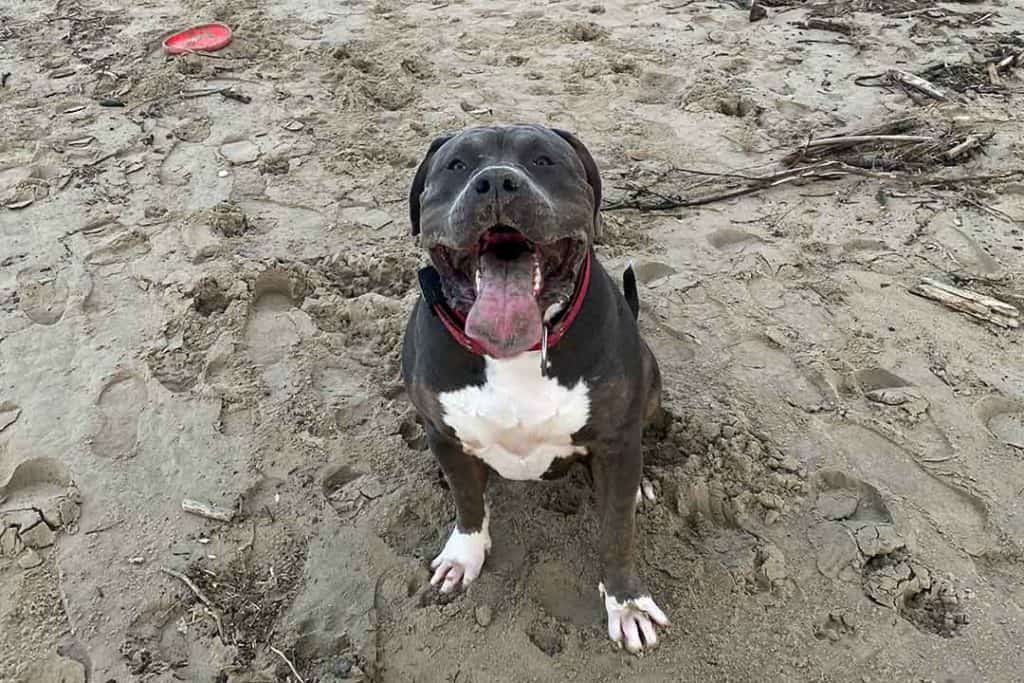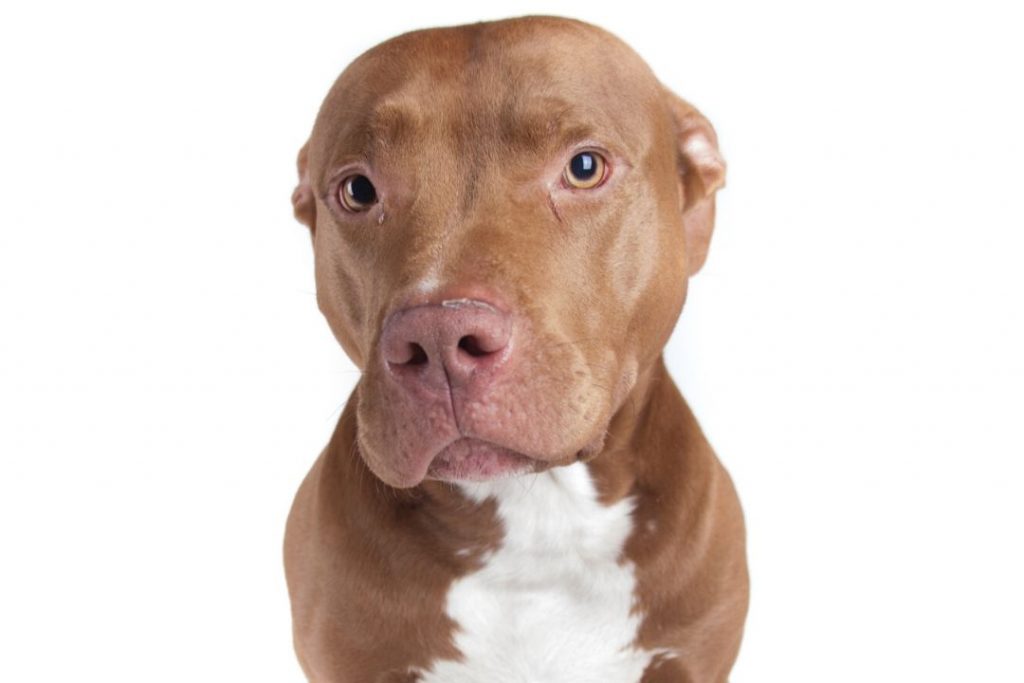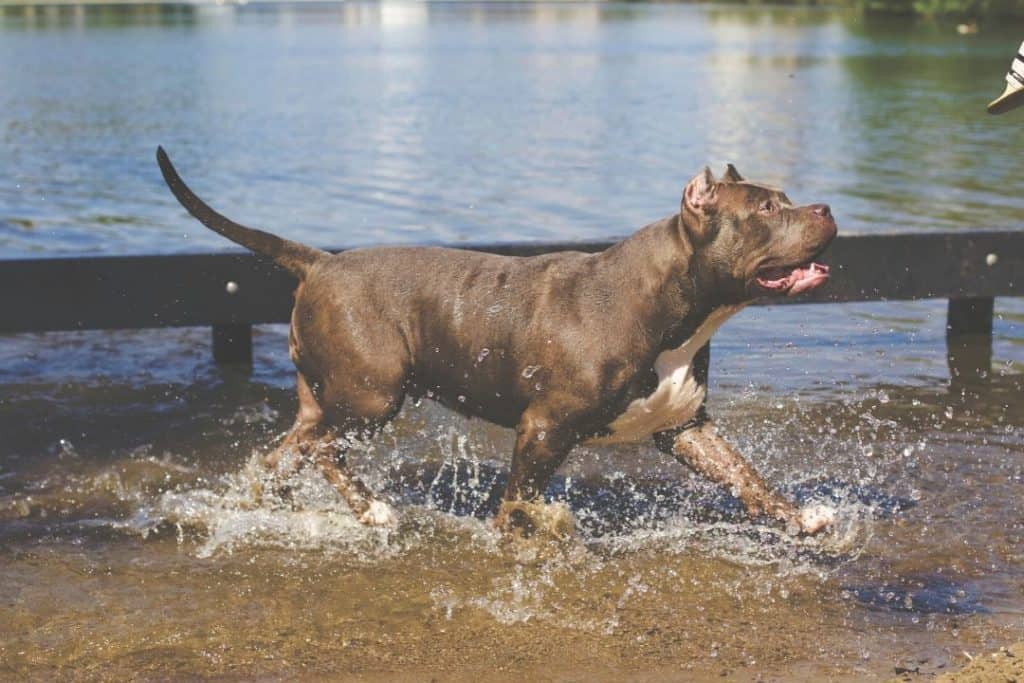This article may contain affiliate links, and I will be compensated if you make a purchase after clicking on my links (at no additional cost to you)
The American Pitbull has a well-defined physique — muscular, solid, broad, with a wide stance — yet it’s only considered a medium-sized canine. However, this breed possesses immense strength, especially for its size — but why, exactly, are these pitbull-type breeds so muscular?
American Pitbulls are so muscular due to their natural stature, genetics, history as bull-baiting animals, selective breeding, and — in some cases — their diet and exercise routine. With that said, pitbull-type breeds can vary in size, though the one common trait is muscularity.
Whether you own an American Pitbull or are just curious about this lovable breed, I wrote this article to discuss why these dogs are so muscular. I’ll cover their stature, genetics, history of the breed, and how selective breeding plays a role in their physique.
I’ll also touch on different diet and exercise routines that contribute to a pitbull’s muscular body.
The American Pitbull Stature
The “pitbull” is not a breed, per se. Instead, the term “pitbull” describes four different bully breeds, including:
- American Pit Bull Terrier
- American Staffordshire Terrier
- Staffordshire Bull Terrier
- American Bully
These breeds are all muscular in nature, as stated in their breed standard descriptions from the AKC or the UKC. I’ve outlined basic descriptions of each breed’s stature below:
American Pit Bull Terrier
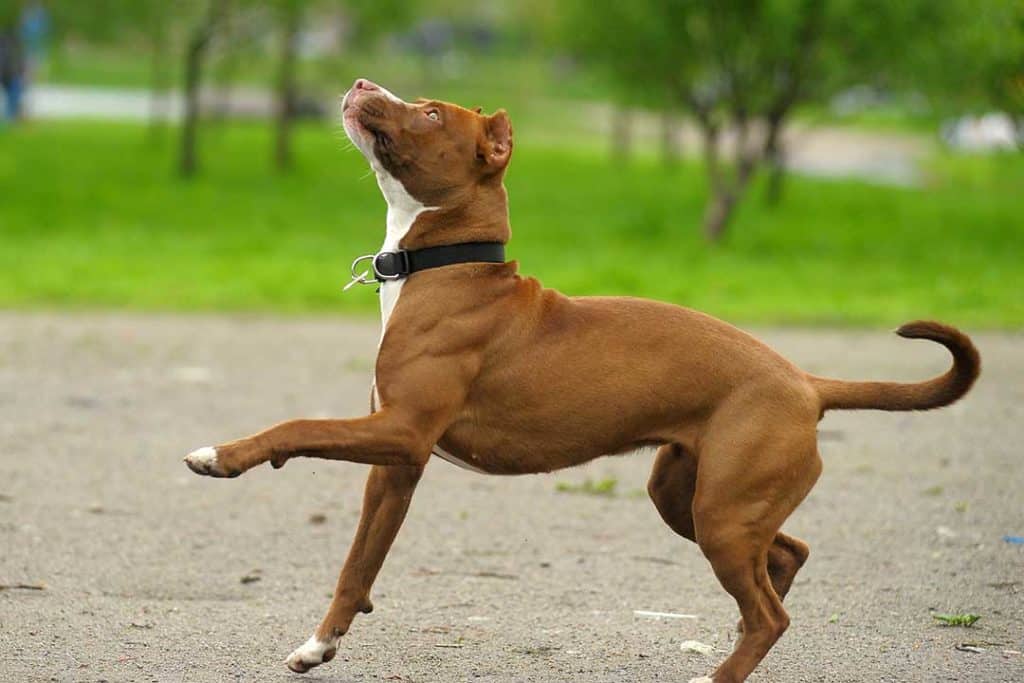
The American Pit Bull Terrier has a deep chest, well-muscled limbs, a large, broad head, and a wide muzzle. The breed stands at a height of 17-21 inches (43-53 cm) and weighs in around 30 to 60 pounds (13-27 kg), with females being on the smaller end of the scale.
They’re considered a “medium-sized” canine, but they possess incredible strength for their size.
American Bully
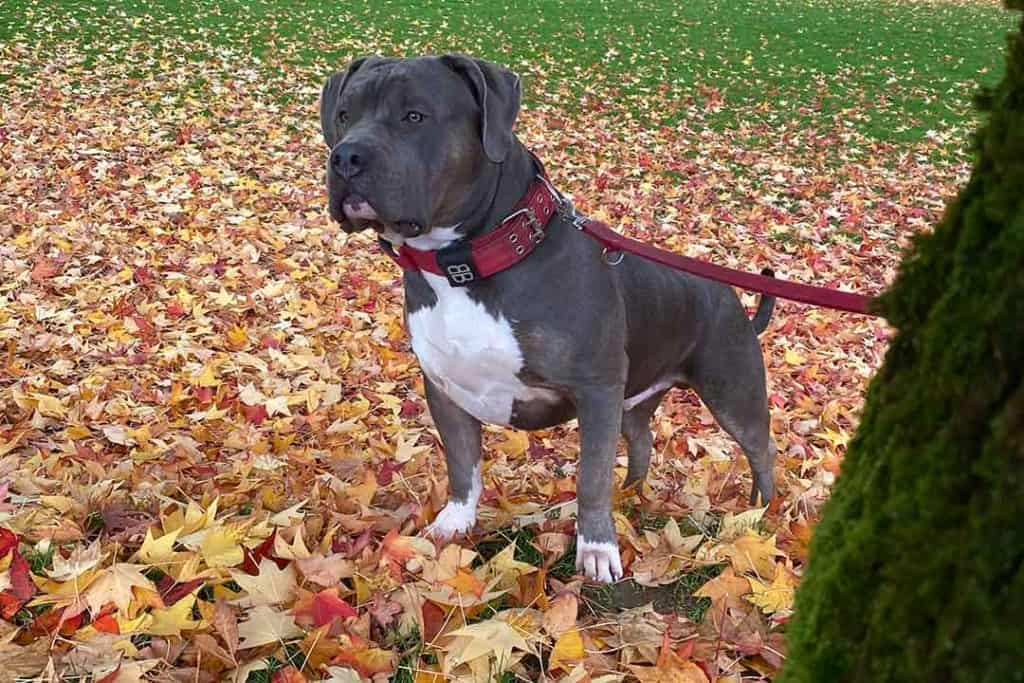
The American Bully is recognized by the United Kennel Club, but not by the AKC. The breed retains much of the original bulldog appearance — solid, strong, thick, muscular — yet quick and agile.
They have short, square muzzles, muscular necks, broad chests, firm backs, and well-defined muscular limbs and shoulders. They stand from 16 to 20 inches (41 to 51 cm) and weigh 44 to 132 pounds (20 to 60 kg), with females at the smaller end, depending on the classification from pocket to standard and XL.
American Staffordshire Terrier
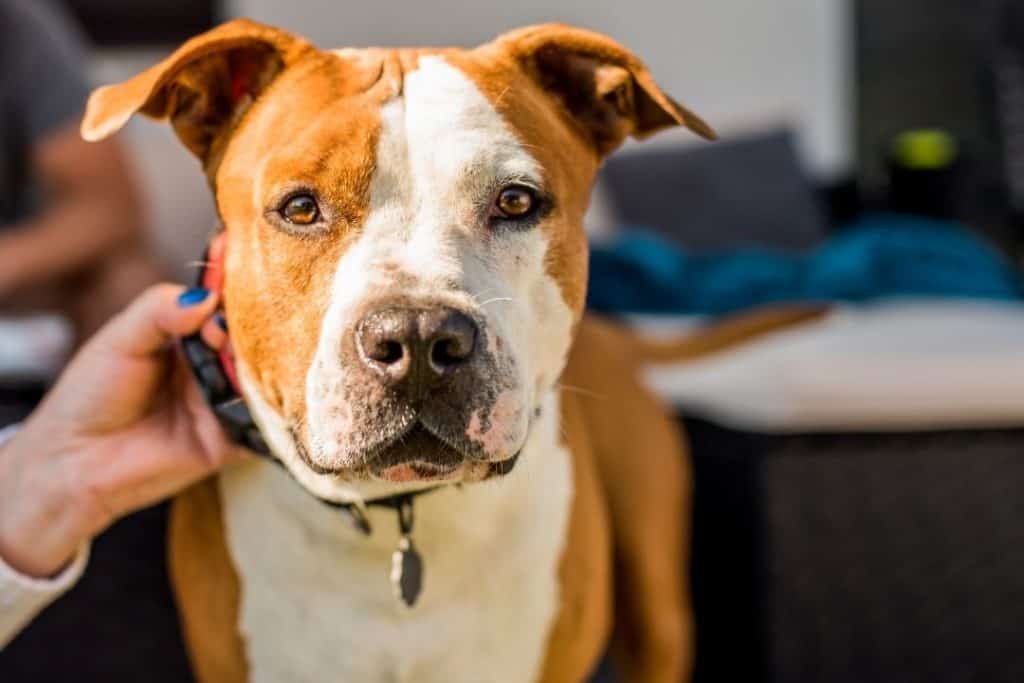
The American Staffordshire Terrier, much like the aforementioned pitbull-type breeds, is strong and muscular but graceful and agile. They’re stocky, with broad skulls and medium muzzles.
Their shoulders and legs are well-muscled, and their chests are deep and broad. The dogs range from 17 to 19 inches (43 to 48 cm) and weigh between 40 and 70 pounds (18 to 32 kg), with females typically smaller than males.
Staffordshire Bull Terrier
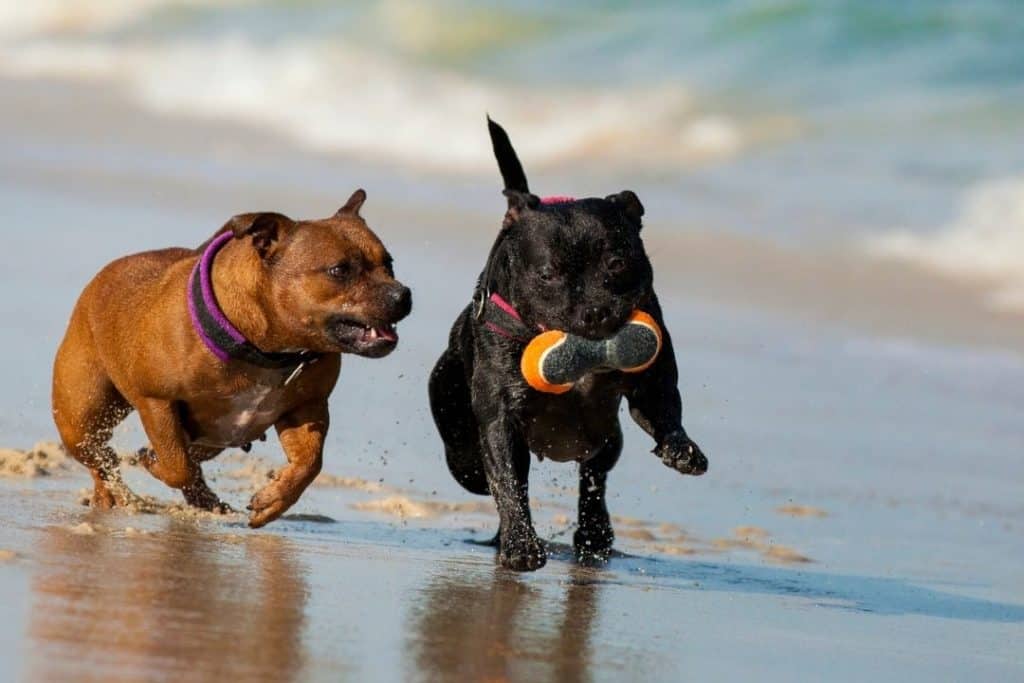
The Staffordshire Bull Terrier is the smallest of the pitbull-type breeds, standing from 14 to 16 inches (36 to 41 cm) in height and weighing between 24 and 38 pounds (11 to 17 kg). This canine is powerful, strong, muscular, and agile, despite its small stature. It possesses a deep, wide skull and short, muscular neck that widens toward the shoulders. Its legs and back are both strong and well-muscled.
Pitbull Characteristics
Based on each of the breed’s descriptions, the pitbull-type breeds share some physical characteristics, including:
- Well-muscled
- Strong and firm
- Wide skulls
- Deep, wide chests
When given a proper diet and exercise, these breeds are naturally muscular. I’ll discuss this more in-depth in the next section.
Pitbulls Are Naturally Muscular
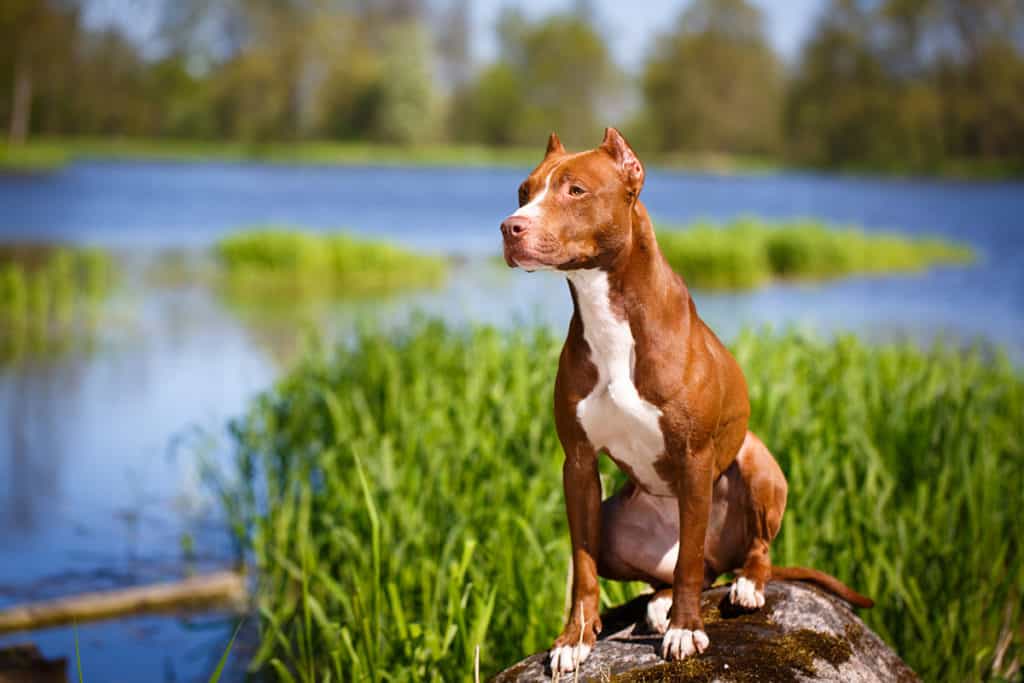
It’s easy for pitbulls to build muscle, thanks to their high energy levels, fast metabolism, and natural body composition. In fact, the American Pit Bull Terrier is the “king” of muscle, being one of the most muscular breeds out there.
With that said, not all pitbull-type dogs are the same, even if they’re the same exact breed. For example, one American Pit Bull Terrier may appear lean, whereas another looks bulky.
This is typically due to selective breeding, which I’ll touch on later in this article.
Even so — whether lean or bulky — the common trait among pitbull-type breeds is muscularity.
Pitbulls Descended from Bull-Baiting Dogs
Each of the pitbull-type breeds, including the American Pit Bull Terrier, descended from the British Bull and Terrier (now extinct). The British Bull and Terrier was essentially a hybrid, a cross between the Old English Bulldog and the Old English Terrier (both also extinct).
The purpose of the British Bull and Terrier was for bull-baiting. This dangerous blood sport involved placing specialized fighting dogs into a ring with a bull.
The canine’s “job” was to bite and hold onto the bull’s nose and eventually pin it to the ground. Sadly, many dogs were maimed and killed by the massive bulls during these events.
Due to their purpose as bull-baiters, the breed looked quite different from the bulldogs and pitbull-type breeds that we’ve come to know and love today. While many of today’s pitbull-type breeds are muscular yet lean, the original canines were stocky, heavy, low-slung, and considerably slower than the breeds we see in this day and age.
Their low-slung bodies were necessary to “lay low” and prevent the bull from noticing their presence as they silently crept upon them. The wide stance provided a lower center of gravity — that, in combination with their heavy, stocky stature, prevented them from being easily knocked over in the ring. Their well-muscled bodies, of course, were for brute strength as they took down massive, powerful bulls.
The cruel sport stayed popular during the early 1800s, eventually being outlawed in 1935. Unfortunately, people turned to dogfighting instead. Dogfighting was different from bull-baiting, however, so owners bred the stocky, heavy, low-slung dogs with agile terriers to create fast, powerful fighting dogs.
It’s believed that the change from bull-baiting to dogfighting is what contributed to the breed appearance that we see today — leaner than the original bulldogs, but still muscular in nature.
While it’s unfortunate that many of the original bull-baiting dogs were met with a brutal demise, it reiterates the fact that today’s pitbull-type breeds have incredible athletic capabilities. Their brute strength and heavy muscle make them excellent at canine sports, such as weight-pulling.
Pitbulls and Selective Breeding
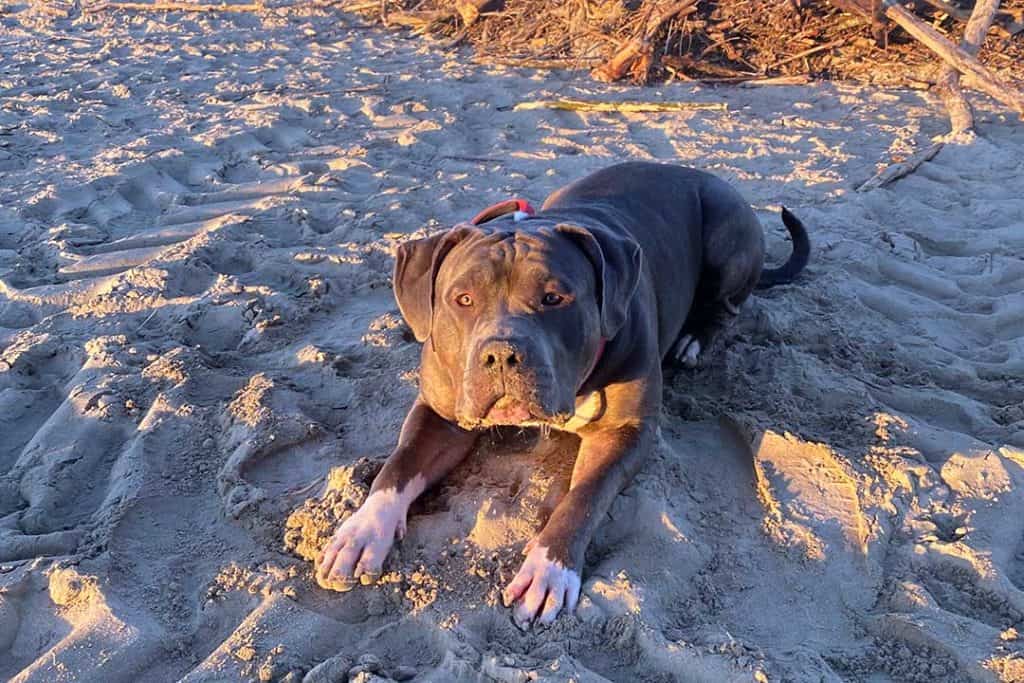
As with the original bull-baiting dogs of yesteryear, many dogs today are bred for specific characteristics. That being said, not all pits are stocky and muscular (with the exception of the American Bully).
These traits can be linked to genetics, but at the same time, the breed’s stature can vary from dog to dog. They’re essentially a terrier/bulldog hybrid — two dogs that differ greatly in physique. As such, pitbull-type breeds can come in a variety of heights, weights, and body compositions.
Pitbull’s Diet and Exercise Can Make Muscular Canines
Due to their metabolism and body composition, pitbulls can easily add muscle. After all, they’re bred as working dogs that possess immense power, strength, and muscle.
With that said, a pitbull’s diet and exercise routine can greatly contribute to their body composition, much like in humans.
Pit Bull Diet
A pitbull that’s fed a diet high in protein is highly likely to have more muscle than a dog that’s fed a lower ratio of meat.
Many pitbull owners create a food regimen that consists mainly of protein for their American Pitbull dogs, with meat as the foundation of the diet. Some owners choose to feed raw, with protein from sources such as raw, meaty bones, organ meats, muscle, fish, and eggs.
Pit Bull Exercise
Exercise is necessary for the health and well-being of any canine, but especially the highly energetic pitbull-type breeds.
These breeds can stay muscular, even with only moderate exercise, such as an hour of:
- Walking
- Hiking
- Playing fetch
- Playing tug-of-war
These activities are simple and fun for the pitbull, and they also help expel any excess energy.
Some owners take it to the next level, however.
Pit Bull Weight-Pulling
Because of their naturally muscular stature, pitbull-type breeds are excellent candidates for weight-pulling. In this sport, the dogs may pull tractors, sleds, or other heavy weights. Not all dogs start at this level, however. Many begin with low weights, such as three to five pounds, slowly working their way up to more for longer distances.
Pitbulls excel at this type of exercise as they possess more strength than other breeds, especially within their strong necks and shoulders.
Some owners set up tug-stations at their home to help the dog exercise their neck, back, jaw, and shoulders.
It’s important to note, however, that pitbull-type breeds may dehydrate faster than other dogs, and they’re more prone to heat exhaustion and heatstroke. Therefore, it’s imperative that you provide the dog with regular cold, fresh water to rehydrate as they workout, especially on warm days.
Conclusion
It’s no secret that pitbull-type breeds, including the American Pit Bull Terrier, have intimidating, muscular physiques. Their physical characteristics stem from their genetics, history as bull-baiting dogs, selective breeding, and, in some cases, is a result of their diet and exercise routine.
The well-defined muscles of the pitbull showcase a powerful breed, and one that has come quite a long way from it’s early days as an aggressive, bull-baiting canine.

I created this blog to share my passion for bullies, and help current and future pitbull owners with things like diet and education.
Hope you find it useful, don’t hesitate to drop a comment on my articles!

